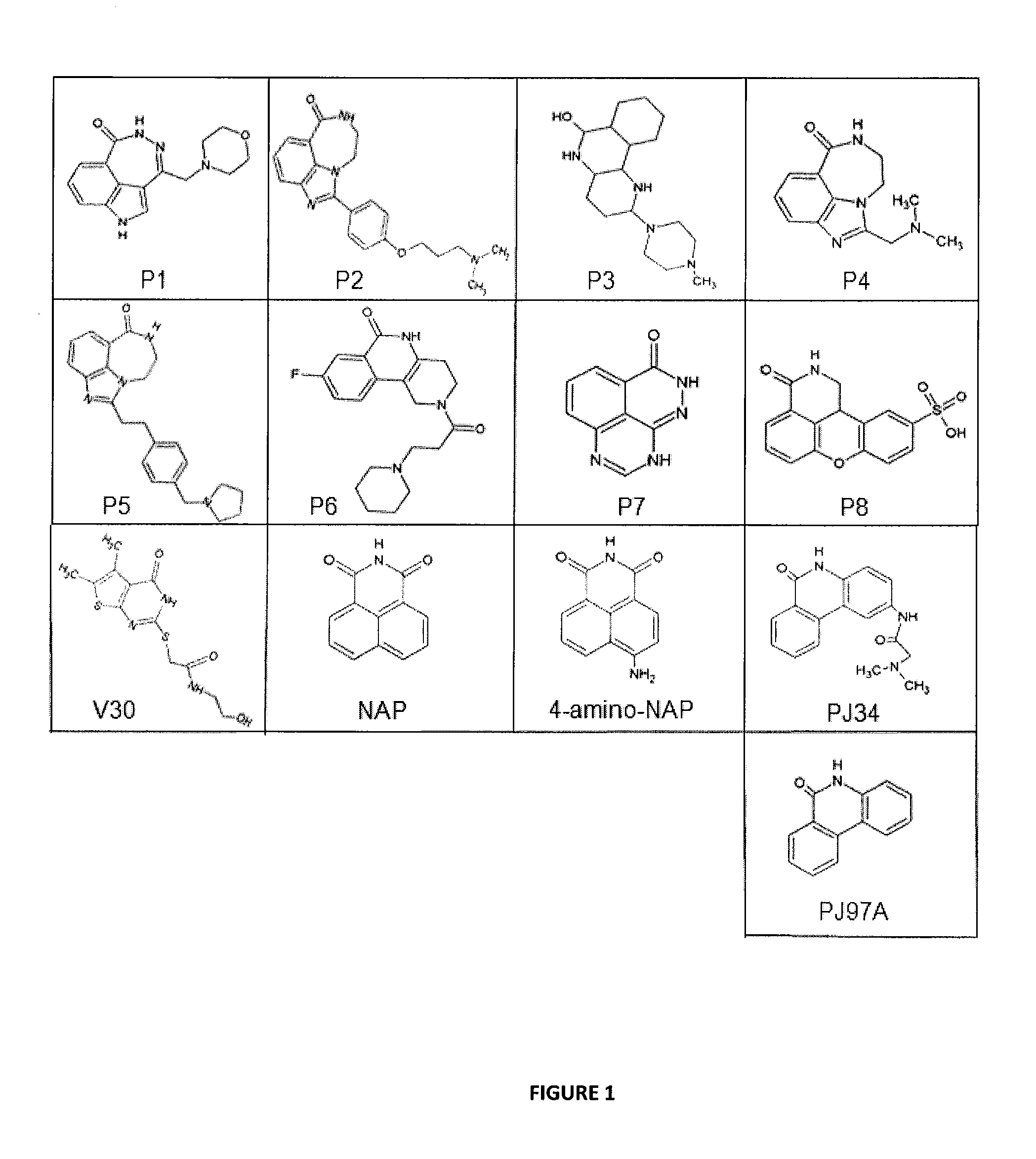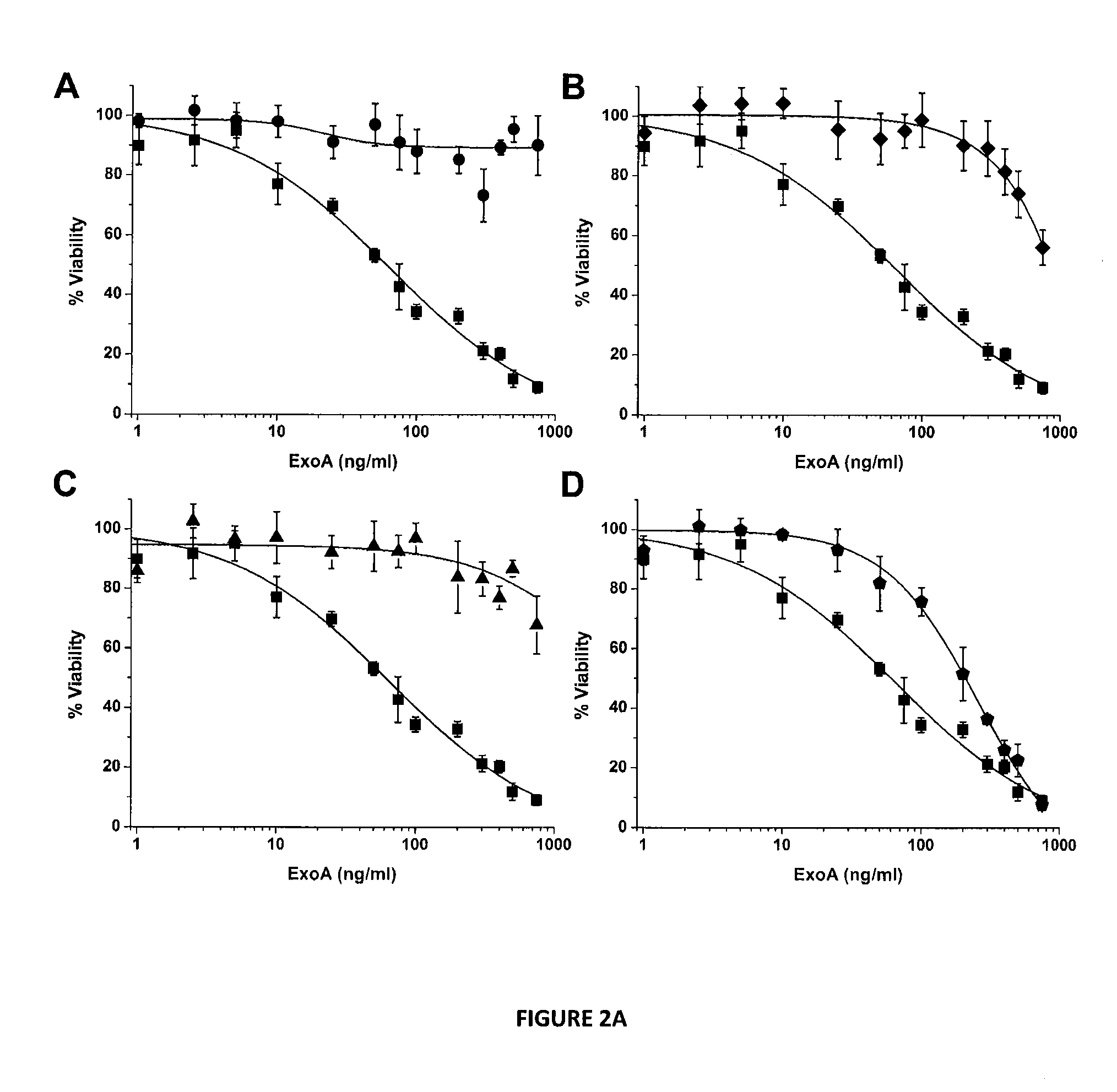Antivirulence compounds inhibiting bacterial mono-adp-ribosyltransferase toxins
a mono-adp-ribosyltransferase and antivirulence technology, applied in the field of antivirulence compounds, can solve problems such as unsatisfactory side effects
- Summary
- Abstract
- Description
- Claims
- Application Information
AI Technical Summary
Benefits of technology
Problems solved by technology
Method used
Image
Examples
example 1
Characterization of Antivirulence Compounds Inhibiting P. aeruginosa Exotoxin (ExoA) and Cholix Toxin
[0066]1. Materials and Methods
1.1 Strains and Media
[0067]Saccharomyces cerevisiae W303 (MATa, his3, ade2, Ieu2, trp1, ura3, can1), ERG6-(MATa, his3, leu2, met15, ura3, erg6::KanMX), MTID:2955 (MATa, leu2, trp1, can1, ura3, ade2, his3, pdr1D::NAT, pdr3D::URA3), 2775 (MATa, his3, Ieu2, Iys2, ura3, MNN6::KanMX) and 7034 (MATa, his3, leu2, lys2, ura3, MNN4::KanMX) were grown on yeast-peptone-dextrose or synthetic dextrose (SD) drop-out medium. Human lung epithelial cells (C38) were cultured as previously described 20 in LHC-8 supplemented with 5% fetal bovine serum.
[0068]A small, directed poly-ADP-ribose polymerase library of 8 compounds was a gift from Guilford Pharmaceuticals (Baltimore, Md.). They were numbered P1-P8 to indicate that these compounds originated from this series.
1.3 P. aeruginosa Drug Sensitivity Assay
[0069]Overnight cultures of P. aeruginosa s...
PUM
| Property | Measurement | Unit |
|---|---|---|
| concentration | aaaaa | aaaaa |
| concentrations | aaaaa | aaaaa |
| total volume | aaaaa | aaaaa |
Abstract
Description
Claims
Application Information
 Login to View More
Login to View More - R&D
- Intellectual Property
- Life Sciences
- Materials
- Tech Scout
- Unparalleled Data Quality
- Higher Quality Content
- 60% Fewer Hallucinations
Browse by: Latest US Patents, China's latest patents, Technical Efficacy Thesaurus, Application Domain, Technology Topic, Popular Technical Reports.
© 2025 PatSnap. All rights reserved.Legal|Privacy policy|Modern Slavery Act Transparency Statement|Sitemap|About US| Contact US: help@patsnap.com



